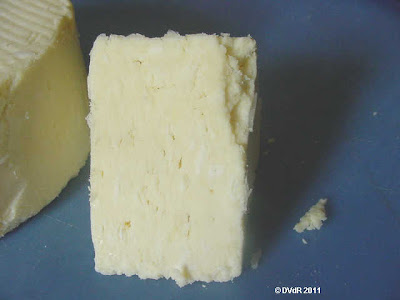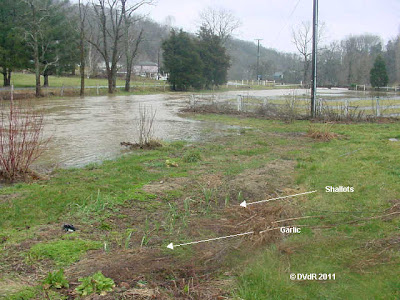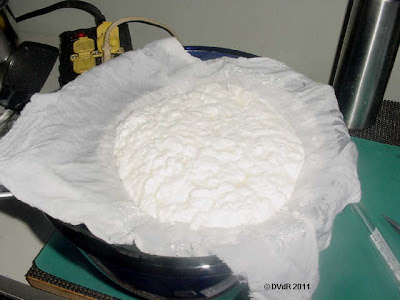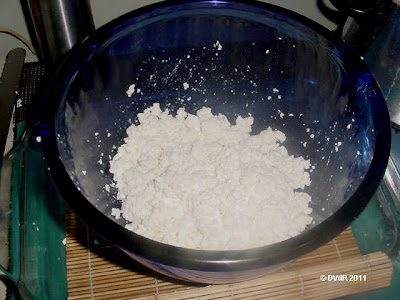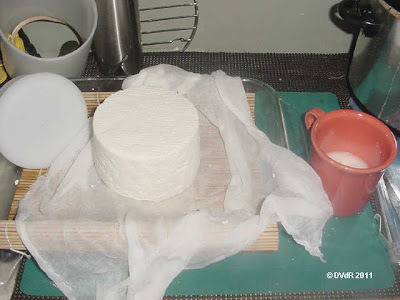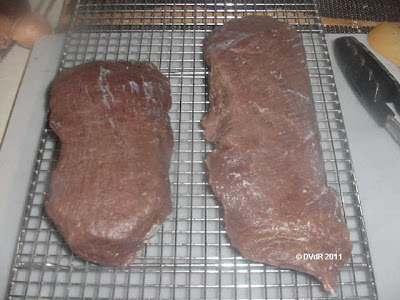The disturbing situation of airborne radiation particles and radiation-contaminated water in Japan sure puts a different light on drinking water now. Unfortunately for me (and for perhaps many of us) radiation is both a foreign and complex subject and searches on the internet didn't turn up direct answers to my questions. What I did find in a roundabout way is that there
is information available for removing dissolved mineral radioactivity in drinking water, primarily because here in the US there are many areas with hazardous levels of radionuclides in our drinking water.
When some 'authority' figure says any radiation hazard coming from Japan is very low, what kind of radiation are they talking about? There are alpha particle/emitters, beta particle/emitters, gamma rays, neutrons... and are they talking about ionizing radiation or non-ionizing radiation?
I have been slightly biased against nuclear power plants for many years, but after researching nuclear technology for an intensive week or more,
I am now standing firmly against nuclear power plants. This is not a knee-jerk, panic reaction, but an educated response (
and a hard slap to my own head because of all those years I never made the time to really learn about nuclear technology.)
Sure, "They" say nuclear power may help solve the US dilemma of our voracious power consumption, and that it IS safe, but that's not the answer.
How many of those people in Japan even within 50 miles of the Fukushima Reactors do you think would gladly give back most if not all their electrical consumption over the last 40 years if it would erase the nightmare?
In order to understand nuclear technology and its impact on human health, I suggest you read
Nuclear Radiation and its Biological Effects because I cannot begin to explain it. I do know the atomic structure of fission fragments produced in nuclear reactors is unstable... which means no more predictable than a crazed crack addict.
Please note what I've posted below does not constitute professional water filtration advice, nor health/medical advice, and does NOT cover all forms of radiation dangers. It is simply some of what I have gleaned from the literature, and because I don't think the authorities are telling us everything. (I'm not either, but only because I don't
know.) It's very confusing and by no means do I understand it all. For one thing, not all radioactive particles are the same, and not all radioactive particles have the same degree of safety or hazards.
Drinking Water:
I've had a survival plan of one sort or another for many years, mostly due to living in hurricane-prone areas, and/or Tornado Alley.
Potable water (i.e. safe to drink) has always been in the forefront of my preparations, and I've made several posts on this blog about potable water. You can find them under the label "potable water".
What hasn't been in my plan for potable water is addressing radionuclides, so now that's been my research project, and here (below some technical data) is a bit of what I've found so far, and some suggestions I plan to follow. I am not suggesting you follow them, just do your own research.
The radioactive Iodine-131 found in the drinking water in Tokyo is a
radionuclide produced when atoms of uranium in nuclear reactors (or nuclear weapons) divide into 2 parts. Iodine-131 has a
half-life of 8 days, and I-131 emits
gamma rays, similar to x-rays which cause ionization. Examples of ionizing particles are
alpha particles,
beta particles,
neutrons, and
cosmic rays.
Gamma rays can be detected by whole-body counters which measure a body's internal exposure whereas dosimeters measure a body's external exposure.
Spent fuel rods contain gamma radiation emitters. The spent nuclear fuel rods and liquid reprocessing waste are called `high level radioactive waste'. It must be kept secure for hundreds of thousands of years -- essentially forever. Lower level waste may be equally long-lived, but it is less concentrated.
Half-life is the physical time required for half of a quantity of a radioactive material to undergo a nuclear transformation ("Division"). The chemical resulting from the transformation may be either radioactive or non-radioactive. We should not confuse physical half-life of the chemical with biological half-life which is the time required to eliminate half of the material from the body through exhalation, urine or feces.
Probably the three most worrisome radioactive materials from a health perspective are iodine-131, cesium-137 and strontium-90. I-131 affects the thyroid; cesium-137 affects the whole body (it is chemically similar to potassium) and strontium-90 affects bone (it's chemically similar to calcium).
Although
stable cesium and strontium are harmless,
radioactive isotopes released by nuclear fission can cause cancer. Cesium-137 and strontium-90 both have half-lives of almost thirty years, but cesium-137 is normally excreted from the body within two years while strontium-90 can be incorporated in our bones for a lifetime.
Radionuclides are often referred to by chemists and physicists, as radioactive isotopes or radioisotopes, and they can also present both real and perceived dangers to health.
Radioactivity is a health risk because the energy emitted by radioactive materials can damage or kill cells. Exposure to radionuclides from drinking water results in increased risk of cancer.
Alpha radiation is a type of particle emitted through the decay of certain radioactive substances, such as uranium. The level of risk depends on the level of
ingested uranium concentration. Alpha particles released by uranium
cannot penetrate the skin, so uranium that is outside the body is less harmful than that which is inhaled. David Ozonoff, an environmental health professor and Chair Emeritus of the Boston University School of Public Health
called alpha particles the "800-pound gorilla of radioactive particles.
Beta particles can cause serious burns or worse, such as the 3 men in one of the Japanese nuclear plants experienced when contaminated water got in their boots.
Okay, back to drinking water...
There is naturally occurring radioactivity in some of our water, depending on where we live. It occurs
irregularly throughout the bedrock, much like other minerals such as iron, arsenic and quartz. A few examples with health importance include the
alpha particles in radon, radium 226, and uranium; radium 228 is a
beta particle.
(Radon is a gas dissolved in water; most other radionuclides are dissolved minerals in water.) Ozonoff says drinking water with any amount of alpha particles, even when consumed in amounts below federal legal limits, raises your risk to develop health problems or in rare cases, cancer. Examples of alpha particles found in water are those from uranium, radium and other minerals.
So, what can we do to hopefully assure safe drinking water in the event of either nuclear contamination or higher than normal levels of naturally-occurring radioactivity?
(Source of the water treatment technical data below.)
Obviously one option is buying bottled drinking water (if you can trust your life to it), but that can get very expensive very fast.
In my opinion from all I have read, my own best (and possibly imperfect) option is actually a choice of 2 versions of the same basic thing: a reverse osmosis system. One version is a whole-house unit capable of processing 300-400 gallons a day, enough for a family of 4 for daily activities including showers and laundry as well as drinking water. My personal option would be a P.O.U. (Point of Use) version which would treat 2-5 gallons a day, enough for drinking water.
By the way, the only bottled water I ever buy to drink is Aquafina, which is bottled through a reverse osmosis treatment. I've been buying it for several years, although now I try to avoid adding plastic bottles to our landfills.
Reverse osmosis (RO) treatment addresses all uranium, radium and gross alpha contaminants. In this treatment process, water under pressure is placed against a special membrane. The RO membrane allows water molecules to pass through, but retards the passage of other contaminants, including radionuclides. The rejected contaminants and the water that does not go through the membrane are "wasted" from this device to prevent the overall buildup of the contaminant(s) on the untreated side of the membrane. Typical installation cost of RO is approximately $900-$1,100. The benefits of RO treatment are that it will take out all dissolve mineral radionuclides, whether positive or negative valance, and any other unrecognized contaminants. In addition, there is no concern about the contaminants accumulating within the treatment device. (Note to self: Where do the contaminants go if they don't accumulate in the device??)
Another option is Treatment Equipment for Ion Exchange, which is basically a water softening unit that removes targeted contaminants by exchanging them for other non-hazardous contaminants, typically salt. The contaminants accumulate in the medium, see notice below about disposal.
It is important to read the fine print on any filtration system to see exactly what they actually filter out. (That also means I need to check the filters stored in my emergency kit and see if they filter radionuclides.)
Radionuclides can also be removed by cartridge size cation and anion exchange medias and certain adsorptive medias. Cation exchange (+) will address all radium contaminants and that portion of the gross alpha which has a positive valance. Anion exchange (-) addresses uranium and the remaining factors contributing to gross alpha. These radionuclides accumulate on the ion exchange cartridge until the cartridge removal capability is equaled; thereafter all contaminants could get through. Most modern devices have a water meter to alert the user when the treatment capability is used up. Initial cost should be lower than RO, but operating cost should be reviewed.
Notice: The spent regeneration solution and concentrated radionuclides are typically discharged to the home's septic system or a separate dry well. Proper disposal of the concentrated radioactivity is an important aspect of any treatment process and should be discussed with the authorities in your area.






